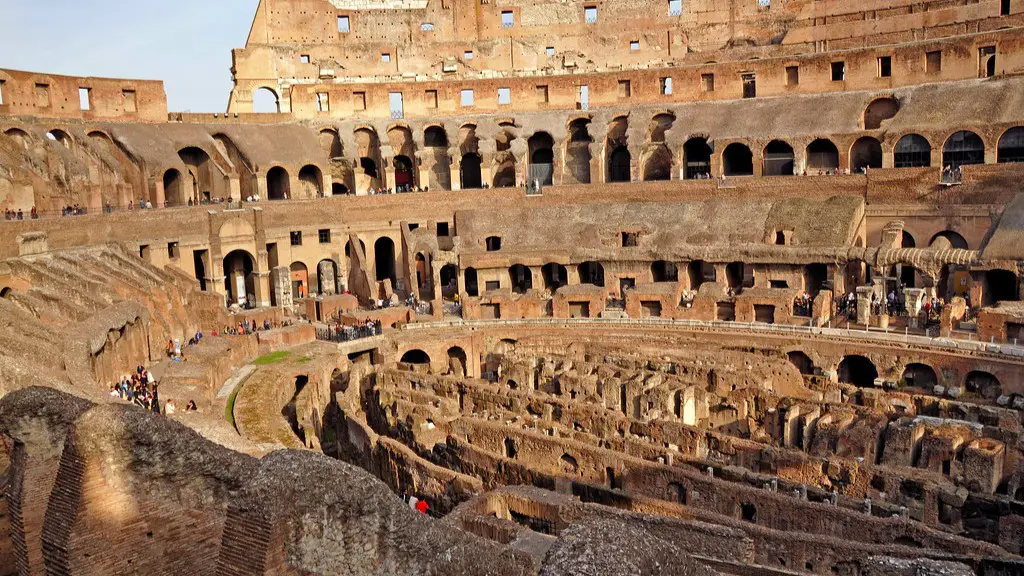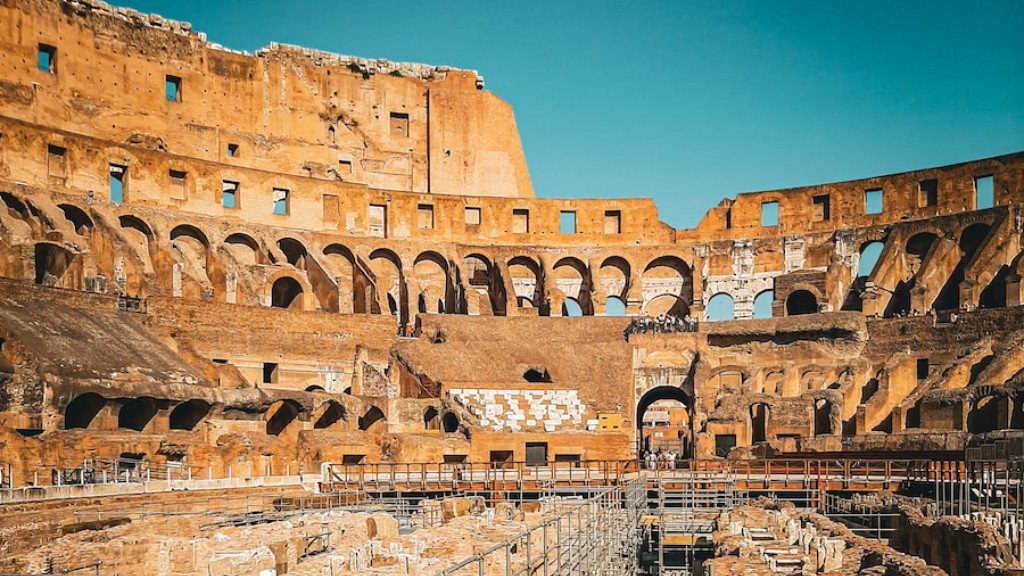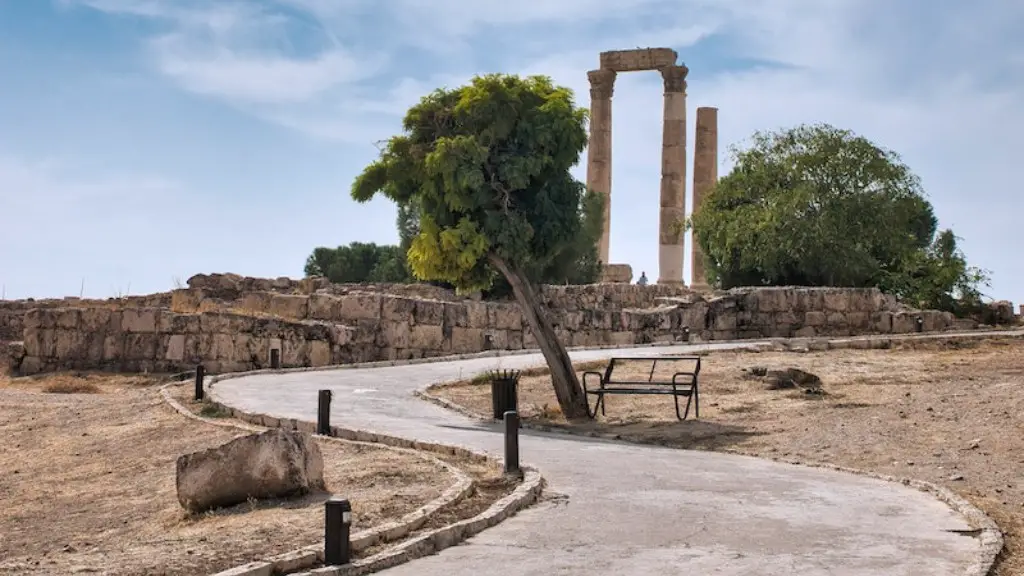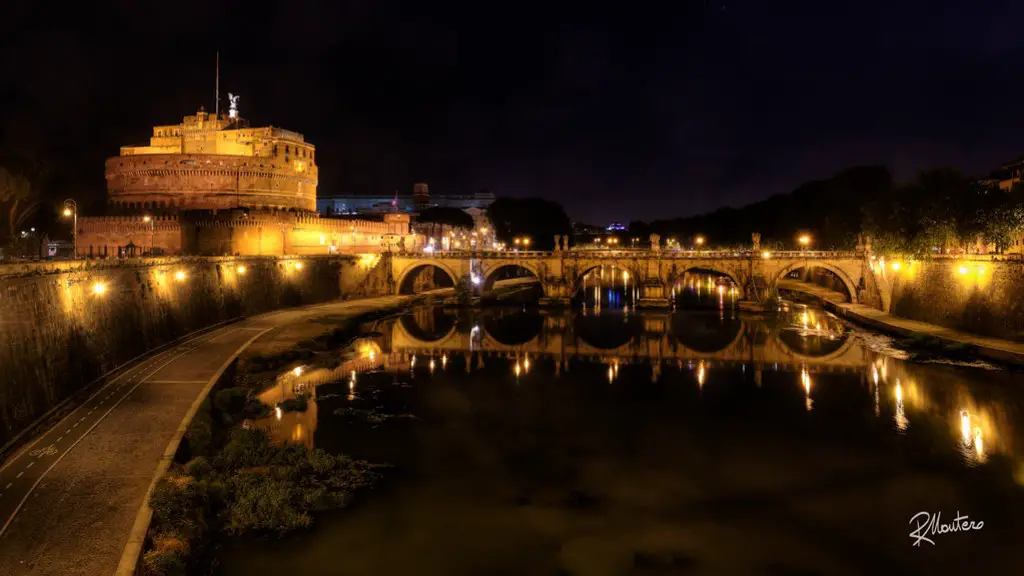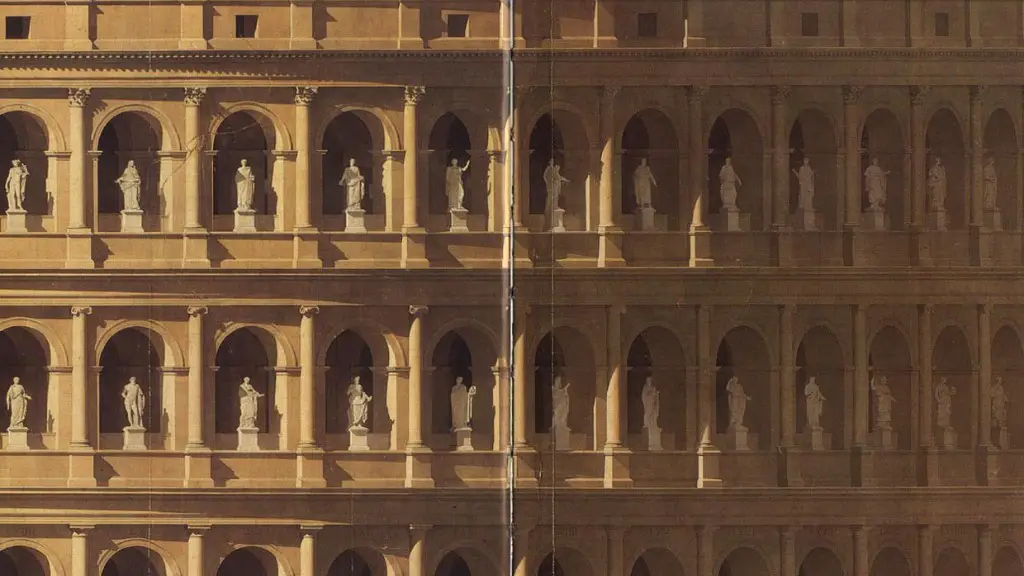It is not known for certain if ancient Romans used canvas for their paintings, as there are no surviving examples of Roman paintings on canvas. However, the Roman writer Pliny the Elder (AD 23–79) mentions in his Natural History that certain animal skins were used as painting surfaces, and it is possible that these were stretched over a wooden frame, similar to modern canvas.
There is little evidence that ancient Romans used canvas for painting. Most of the paintings that have been found from the Roman period were either frescoes or panel paintings.
What did ancient Romans paint on?
Fresco painting was a popular technique in Roman times, used to adorn the interiors of private homes in cities and in the countryside. Ancient literary references tell us that Roman paintings were also done on wood, ivory, and other materials, but only those in the durabile medium of fresco have survived. Frescoes are murals painted onto wet plaster, and as the plaster dries, the paint becomes permanently bonded to the wall. This makes frescoes very durable, and many ancient examples can still be seen today.
Roman art refers to the visual arts made in Ancient Rome and in the territories of the Roman Empire. Roman art includes architecture, painting, sculpture and mosaic work. A wide variety of materials and techniques were used in Roman art, including marble, bronze, silver, gems and terracottas.
What are the forms of painting used in Roman art
Roman art was very diverse, covering a wide range of subjects. Animals, still life, portraits, mythological and historical scenes, and landscapes were all popular subjects for Roman artists. Some landscapes were simple scenes of nature, while others showed scenes from mythology. Roman still life paintings often featured everyday objects such as fruit and animals.
Roman art used vase-painting in a different way than the ancient Greeks. Vessels in Ancient Roman pottery were often decorated in moulded relief, which gave them a more stylish look.
What did Romans decorate their walls with?
The Romans used wall paintings as a way to open up and lighten their space. More specifically, they used frescoes. A fresco is made by first preparing the wall with 1-3 coats of mortar (a lime and sand mix), then covering that with 1-3 coats of lime mixed with finely powdered marble.
One of the most well known features of the decoration of a Roman house is wall painting. However, the walls of Roman houses could also be decorated with marble revetment, thin panels of marble of various colors mortared to the wall.
What are the two types of Roman art?
The art practised by the Romans was heavily influenced by the Ancient Greek artists. Many of the same types of art were practised, including sculpture, painting, and decorative art. The Romans were able to master these types of art and produce their own unique versions.
It is interesting to note that ancient Greek artists tended to focus more on individualism and idealism, while ancient Roman artists tended to focus more on realism and highlighting the spirits of their rulers. This difference in approach is likely due to the different values and beliefs of each culture. The Greeks were more focused on the individual and the idea of perfection, while the Romans were more concerned with realism and the presentation of their rulers in a positive light.
What were Roman portraits made of
Roman Republican portraiture was characterized by verism, which was influenced by Hellenistic portraiture. This type of portraiture mainly survived as marble and bronze sculpture. Roman portrait busts were though to derive in part from death masks or funerary commemorations. This is because elite Romans displayed ancestral images in the atrium of their homes.
Structural or incrustation style: This style is characterized by its use of plaster to imitate different kinds of stone. The artists would create a three-dimensional effect by using Engobe, a type of clay that is different in color than the plaster beneath it.
Architectural style: This style is characterized by its use of perspective to create an illusion of depth. The artists would use trompe l’oeil, a technique that uses realistic imagery to create an optical illusion, to Trick the viewer’s eye.
Ornamental style: This style is characterized by its use of geometric patterns andmotifs. The artists would use Mahmara, a type of plasters that allows for a variety of colors, to create these patterns.
Intricate style: This style is characterized by its use of incised lines and stucco reliefs. The artists would use a technique called sgraffito, which involves scratching lines into a layer of plaster to create a design.
What is the name of a common painting method from Rome?
Fresco is a painting technique in which the paint is applied to the wall while the wall is still wet. This allows the paint to penetrate the wall and create a very strong bond. Fresco was the most common painting technique in Roman murals and it is still used today in some parts of the world.
Roman portraiture was one of the most significant periods in the development of portrait art. Originating from ancient Rome, it continued for almost five centuries. Roman portrait artists were known for their skill in creating realistic and lifelike images of their subjects. Many of the best-known portraits from this period are of famous Roman Emperors and other members of the ruling elite. Roman portraiture was an important influence on the development of portrait art in other cultures, especially in the Western world.
Why do Roman walls last so long
The Romans were onto something when they used concrete made from lime and volcanic ash to build their ancient sea walls. Scientists have now discovered that elements within the volcanic material reacted with sea water to strengthen the construction. This is an impressive feat of engineering that is still standing strong today.
The domus was the most common type of house in the city of ancient Rome. The wealthiest Romans, such as Emperors and noblemen, lived in domus. These homes were very grand, with marble pillars, statues, mosaics, and wall paintings.
What is often painted on interior walls in Roman houses?
Fresco painting was a popular technique used by the Romans to decorate the interior walls of their homes and villas. Depending on the purpose of the room, walls could be painted with imaginary architecture, still lifes, mythological scenes, or purely decorative motifs. This technique helped to brighten up the rooms and add a touch of personality to the space.
The First Style is characterized by colorful, patchwork walls of brightly painted faux-marble. Mau called this the “Incrustation Style” and believed that its origins lay in the Hellenistic period—in the 3rd century BCE in Alexandria. This style was adapted and later used in the Pompeii.
Final Words
There is no one answer to this question as the ancient Romans used a variety of materials for their paintings, including wood, stone, and even walls. However, it is possible that they may have used canvas for some of their paintings, though there is no definitive evidence to support this claim.
There is no hard evidence that the ancient Romans used canvas for painting, but there is some evidence that they may have used a coarse linen cloth. The lack of evidence makes it difficult to say for sure one way or the other.
